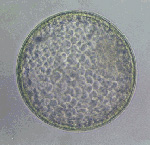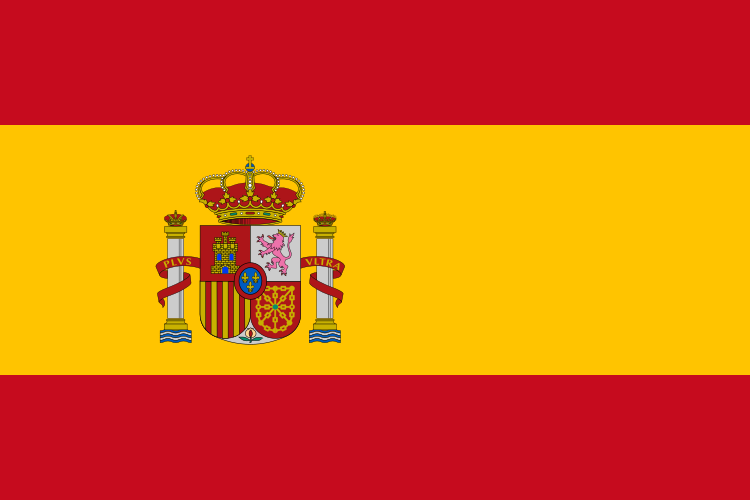 One of the advantages of embryo transfer is the ability to biopsy the embryos in an attempt to diagnose different genetic traits or determine gender. The ability to do so has existed for several years and the amount of genetic information that can be realized is ever expanding as geneticists learn more and tests become available to identify particular alleles.
One of the advantages of embryo transfer is the ability to biopsy the embryos in an attempt to diagnose different genetic traits or determine gender. The ability to do so has existed for several years and the amount of genetic information that can be realized is ever expanding as geneticists learn more and tests become available to identify particular alleles.
 Each year many mare owners choose to breed their mares and flush the embryos rather than allow them to carry their own foal. They may do this because she is still in training, has trouble carrying her own foal to term or due to her age. Regardless of the reason, there are many things to consider before making the final decision. Our library of articles can be a great resource for the new or experienced breeder, whether you have one mare or stallion, or manage the operations of a large breeding farm. Here we will review our articles which encompass the basics of embryo transfer, the freezing of embryos and considerations when choosing the right embryo recipient herd.
Each year many mare owners choose to breed their mares and flush the embryos rather than allow them to carry their own foal. They may do this because she is still in training, has trouble carrying her own foal to term or due to her age. Regardless of the reason, there are many things to consider before making the final decision. Our library of articles can be a great resource for the new or experienced breeder, whether you have one mare or stallion, or manage the operations of a large breeding farm. Here we will review our articles which encompass the basics of embryo transfer, the freezing of embryos and considerations when choosing the right embryo recipient herd.
The majority of equine embryos are collected from the donor mare and transferred immediately as fresh embryos or shipped cooled to a recipient station for transfer within 24 hr. You can learn more about the basics of embryo transfer (ET) in our article, Embryo Transfer and Frequently Asked Questions. Very few equine embryos are frozen despite the numerous advantages of embryo cryopreservation. We discuss the process of freezing embryos in our article, Cryopreservation of Equine Embryos. However here is a quick review of some of the advantages of freezing embryos are:
 By now, most people in the breeding industry know what embryo transfer (ET) is however there is still a little confusion or misconception. I would say that the increased use and knowledge of in vitro fertilization, popularly referred to as ICSI (Intracytoplasmic Sperm Injection), has led to some of this confusion. We hear people interchanging the words embryo and egg as if they are the same thing. Let’s take a minute to draw a simple distinction between the two procedures.
By now, most people in the breeding industry know what embryo transfer (ET) is however there is still a little confusion or misconception. I would say that the increased use and knowledge of in vitro fertilization, popularly referred to as ICSI (Intracytoplasmic Sperm Injection), has led to some of this confusion. We hear people interchanging the words embryo and egg as if they are the same thing. Let’s take a minute to draw a simple distinction between the two procedures.
Embryo vitrification doesn't sound much like "freezing embryos,” but the end product certainly is a cryopreserved equine embryo, frozen in liquid nitrogen for the preservation of genetics and transfer into a recipient mare at a later time. For the sake of some readers of this blog, an embryo is the result of fertilizing an oocyte (egg) with sperm and allowing the initial stages of development to occur. Embryo vitrification is the process whereby we freeze equine embryos for storage for indefinite periods of time prior to transfer into a recipient mare. We have the technology to cryopreserve equine sperm and equine embryos, but not equine oocytes. Herein lays the answer to the most common question that comes up in conversation regarding this blog topic. Some readers assume that since we can freeze the male generated sperm, we can likewise freeze the female generated oocyte. Unfortunately, due to some very sensitive cytoskeletal components in the oocyte, the technology does not exist to freeze equine oocytes. As we proceed, you will understand the process of embryo vitrification and we will delve into areas of research that are improving the success rates of vitrified embryos in generating live foals.
 For many, the decision to perform embryo transfer (ET) from a valuable donor mare must also consider the location and availability of quality and reputable recipient mare herds. In certain parts of the country, the availability of recipient herds with fertile, healthy, manageable, and adequate recipient numbers is very limited. In other parts of the country, quality recipient herds are easily found and used successfully for both fresh and shipped embryos. Picking the right recipient herd for your donor mare should always involve carefully reading the recipient contract and knowing what is expected from the donor mare, recipient mare lease, return policy, lost embryo/fetus policy, and enrollment fee requirements. The ins-and-outs of recipient lease or purchase agreements are great topics to be covered in a later blog article. However, when it comes to selecting a recipient herd to ship your donor mare, ship a collected embryo, or trailer the donor mare into a facility for an embryo flush attempt, it is important to know what we as ET practitioners are looking for in recipient mares.
For many, the decision to perform embryo transfer (ET) from a valuable donor mare must also consider the location and availability of quality and reputable recipient mare herds. In certain parts of the country, the availability of recipient herds with fertile, healthy, manageable, and adequate recipient numbers is very limited. In other parts of the country, quality recipient herds are easily found and used successfully for both fresh and shipped embryos. Picking the right recipient herd for your donor mare should always involve carefully reading the recipient contract and knowing what is expected from the donor mare, recipient mare lease, return policy, lost embryo/fetus policy, and enrollment fee requirements. The ins-and-outs of recipient lease or purchase agreements are great topics to be covered in a later blog article. However, when it comes to selecting a recipient herd to ship your donor mare, ship a collected embryo, or trailer the donor mare into a facility for an embryo flush attempt, it is important to know what we as ET practitioners are looking for in recipient mares.
 Each year many mare owners choose to breed their mares and flush the embryos rather than allow them to carry their own foal. They may do this because she is still in training, has trouble carrying her own foal to term or due to her age. Regardless of the reason, there are many things to consider before making the final decision. Our library of articles can be a great resource for the new or experienced breeder, whether you have one mare or stallion, or manage the operations of a large breeding farm. Here we will review our articles which encompass the basics of embryo transfer, the freezing of embryos and considerations when choosing the right embryo recipient herd.
Each year many mare owners choose to breed their mares and flush the embryos rather than allow them to carry their own foal. They may do this because she is still in training, has trouble carrying her own foal to term or due to her age. Regardless of the reason, there are many things to consider before making the final decision. Our library of articles can be a great resource for the new or experienced breeder, whether you have one mare or stallion, or manage the operations of a large breeding farm. Here we will review our articles which encompass the basics of embryo transfer, the freezing of embryos and considerations when choosing the right embryo recipient herd. One of the advantages of embryo transfer is the ability to biopsy the embryos in an attempt to diagnose different genetic traits or determine gender. The ability to do so has existed for several years and the amount of genetic information that can be realized is ever expanding as geneticists learn more and tests become available to identify particular alleles.
One of the advantages of embryo transfer is the ability to biopsy the embryos in an attempt to diagnose different genetic traits or determine gender. The ability to do so has existed for several years and the amount of genetic information that can be realized is ever expanding as geneticists learn more and tests become available to identify particular alleles. For many, the decision to perform embryo transfer (ET) from a valuable donor mare must also consider the location and availability of quality and reputable recipient mare herds. In certain parts of the country, the availability of recipient herds with fertile, healthy, manageable, and adequate recipient numbers is very limited. In other parts of the country, quality recipient herds are easily found and used successfully for both fresh and shipped embryos. Picking the right recipient herd for your donor mare should always involve carefully reading the recipient contract and knowing what is expected from the donor mare, recipient mare lease, return policy, lost embryo/fetus policy, and enrollment fee requirements. The ins-and-outs of recipient lease or purchase agreements are great topics to be covered in a later blog article. However, when it comes to selecting a recipient herd to ship your donor mare, ship a collected embryo, or trailer the donor mare into a facility for an embryo flush attempt, it is important to know what we as ET practitioners are looking for in recipient mares.
For many, the decision to perform embryo transfer (ET) from a valuable donor mare must also consider the location and availability of quality and reputable recipient mare herds. In certain parts of the country, the availability of recipient herds with fertile, healthy, manageable, and adequate recipient numbers is very limited. In other parts of the country, quality recipient herds are easily found and used successfully for both fresh and shipped embryos. Picking the right recipient herd for your donor mare should always involve carefully reading the recipient contract and knowing what is expected from the donor mare, recipient mare lease, return policy, lost embryo/fetus policy, and enrollment fee requirements. The ins-and-outs of recipient lease or purchase agreements are great topics to be covered in a later blog article. However, when it comes to selecting a recipient herd to ship your donor mare, ship a collected embryo, or trailer the donor mare into a facility for an embryo flush attempt, it is important to know what we as ET practitioners are looking for in recipient mares. 
